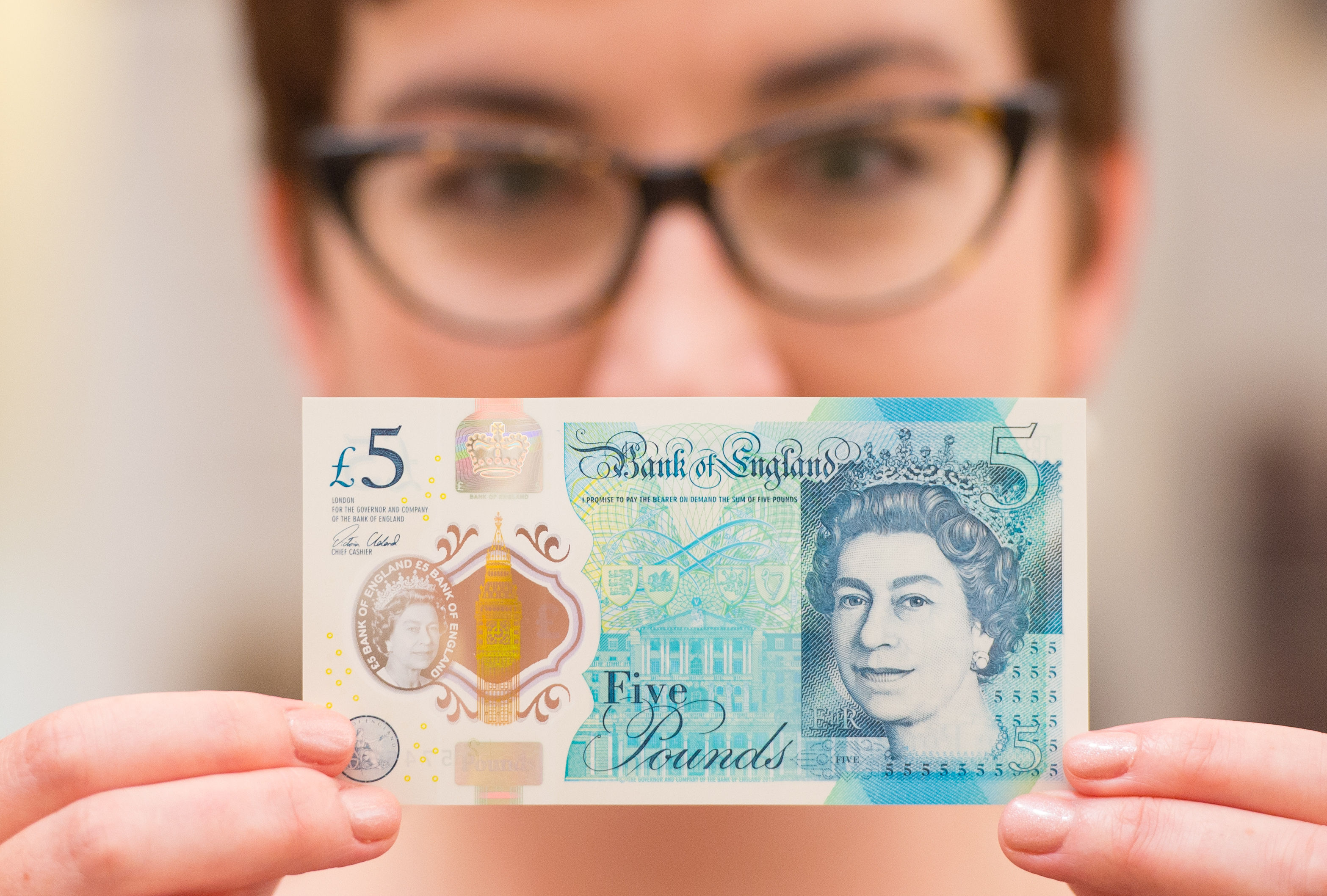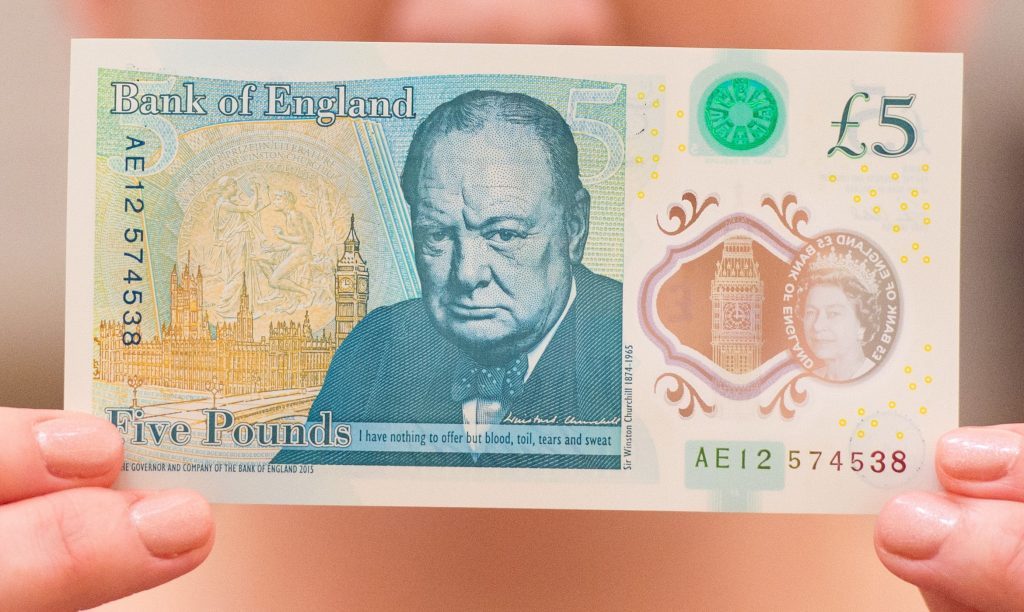
A NEW plastic £5 note featuring Sir Winston Churchill will start to appear in the nation’s wallets after going into circulation from next week.
The new banknote will start to enter circulation from Tuesday. In a break from the Bank of England’s current paper notes, it will be printed on polymer – a thin flexible plastic film, which is seen as cleaner, more secure and stronger.
While the new fiver is the first Bank of England note to be printed on polymer, Scotland’s Clydesdale Bank issued issued two million £5 polymer banknotes to commemorate the 125th anniversary of the opening of the Forth Bridge in March 2015.
The new notes can last around five years longer than paper notes. The first print-run of 440 million new fivers will mark the start of the old notes’ withdrawal as they are banked by retailers and businesses.
It may take a few weeks for some people to start seeing the new note as it gradually appears. The old fiver, featuring prison reformer Elizabeth Fry, can still be used in shops until it is withdrawn from circulation in May 2017.
The new £5 note paves the way for a new generation of security features, making the note even harder to counterfeit. They include a see-through window featuring the Queen’s portrait as well as Big Ben shown in gold foil on the front of the note and silver on the back.
Bank of England Governor Mark Carney has previously said of the new £5 note: “The new fiver will commemorate the achievements of the only prime minister to win the Nobel Prize for literature and one of the greatest statesmen of all time – Sir Winston Churchill.
“As he himself said, ‘a nation that forgets its past has no future’. Our banknotes are repositories of the United Kingdom’s collective memory and like Churchill, our new polymer notes will stand the test of time.”
The announcement by the Bank of England in 2013 that Fry would be replaced with the former prime minister caused an outcry as it could have meant that, apart from the Queen, there would be no female faces on the UK’s notes.
Thousands signed a petition in protest. It was subsequently announced that novelist Jane Austen would be the face of the new £10 note from summer 2017.
Like the new fiver, the new £10 and £20 notes will also be printed on polymer.
The Bank previously announced artist JMW Turner will appear on the next £20 banknote, due to be issued by 2020.
Born at Blenheim Palace on November 30, 1874, Sir Winston Leonard Spencer Churchill was elected as a Conservative MP for Oldham in 1900. In May 1940 he became prime minister, replacing Neville Chamberlain and leading the newly-formed national government.
In his first speech to the new administration, he declared: “I have nothing to offer but blood, toil, tears and sweat,” – words which are depicted on the new £5 note.
Sir Winston’s strong leadership qualities during the Second World War earned him a vast international following, particularly in the United States where he was granted honorary US citizenship. He has been portrayed on the postage stamps of 150 nations.
During his lifetime, Sir Winston received 37 orders, decorations and medals including Companion of Honour, Order of Merit, Order of the Garter and in 1953 the Nobel Prize for literature.
He died at the age of 90, on January 24, 1965, and was given a state funeral. Sir Winston was also the first commoner to be portrayed on a British coin – the 1965 crown or five shilling piece.
READ MORE
Former First Minister Alex Salmond features on independence supporter’s ‘Two Smackeroonie’ coin

Enjoy the convenience of having The Sunday Post delivered as a digital ePaper straight to your smartphone, tablet or computer.
Subscribe for only £5.49 a month and enjoy all the benefits of the printed paper as a digital replica.
Subscribe